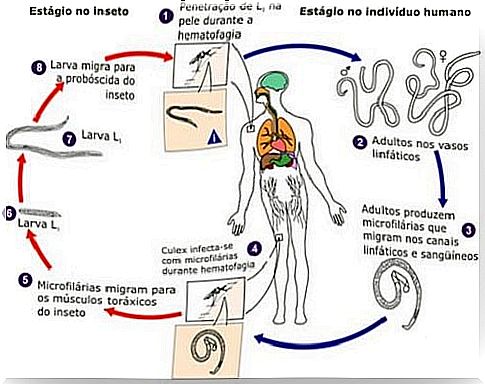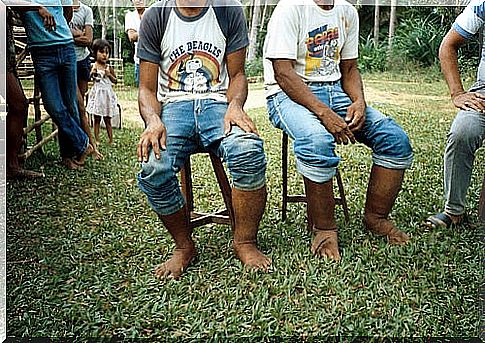What Is Filariasis? Know How To Prevent And Treat It

Filariasis has already affected more than 120 million people. Its origin is parasitic, that is, it occurs through the infestation of worms called “filariae”.
The best known symptomatic form of the disease is lymphatic filariasis, popularly called in reference to swelling and thickening of the skin and underlying tissues.
Furthermore, this was the first among infectious diseases transmitted by insects to be discovered.
How is filariasis transmitted?
In short, this disease is responsible for the parasite called Wuchereria bancrofti , and its vector is the mosquito Culex quiquefasciatus .
The infected mosquito inoculates the parasite in each person, through the bite, therefore, the worm passes through the bloodstream of the infected patient.
In addition, it is very important to discover the infection at the beginning and seek a doctor, who will indicate the appropriate treatment; according to the effects caused in the body.
This is a very common problem in Brazilian states such as Pará, Maranhão, Alagoas, Bahia, Pernambuco and Santa Catarina.

Types of Filariasis
There are 9 nematodes that affect humans, and these are divided into 3 groups:
• Lymphatic filariasis (worms occupy the lymphatic system);
• Subcutaneous filariasis (occupy the subcutaneous layer of fat);
• Filariasis of the Serous Cavity (occupy the serous cavity of the abdomen).
Symptoms
The most common symptoms are:
• Fever;
• Headache;
• Malaise;
• Infectious skin diseases;
• Deformations;
• Presence of fat in urine, etc.
In a more advanced stage of the disease, patients have inflammation of the lymphatic vessels, and as a result, there is blockage of vessels and swelling in the limbs.
Because of this exaggerated swelling, the disease is popularly known as elephantiasis; in addition, this can occur as follows:
- Elephantiasis in the legs: starts on the instep and usually reaches the knee, more rarely the hip. The skin becomes fibrous and wrinkled, and resembles the skin of an elephant.
- Elephantiasis of the scrotal sac and penis: it is very common, it causes an extremely exaggerated growth of the private parts.
- Elephantiasis of arms, breasts or vulva: areas rarely affected, which change as in the case of elephantiasis in the legs.

Diagnosis
The diagnosis is usually made by observing the symptoms, then a blood test, analysis of body fluids or part of the infected tissue can detect the presence of the parasite larvae.
Treatment
Treatment is based on drugs against the parasite (Ex: diethylcarbamazine) and varies according to the degree or intensity of the disease.
In cases where the disease progresses considerably, surgical intervention to repair the area is necessary.
Prevention
Prevention must start with the treatment of infected people to eliminate the parasite from the blood, so mosquitoes that do not contain the parasite will not be able to catch it through infected blood and retransmit it.
In this sense, the WHO (World Health Organization) recommends that populations affected by the disease are treated en masse, through the administration of an annual dose of diethylcarbamazine in areas where the disease is persistent.
The fight against insect transmitter is also important, and prevent incidence of the disease regions; and if it is necessary to take the risk, use repellent constantly and sanitize yourself properly.
Finally, in these regions, it is important not to accumulate standing water in plant pots, water tanks, etc.









